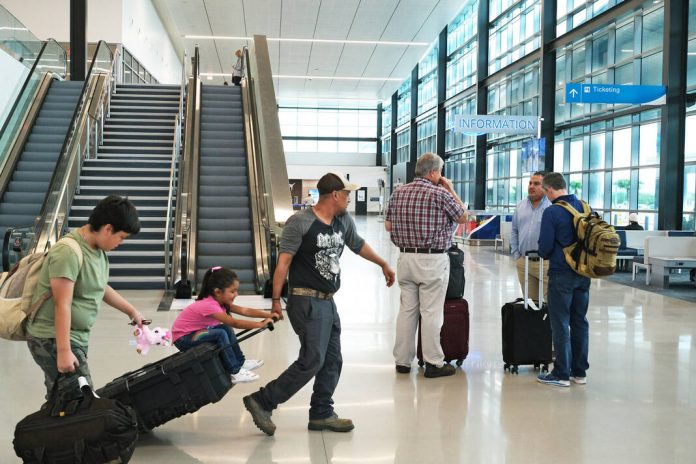For the first time in 26 years, operations of the Brownsville South Padre Island International Airport are self-sustaining, no longer requiring subsidization from the city of Brownsville, and are projected to remain that way going forward.
That’s according to airport Director Bryant Walker, who presented a November 2022 general update on the airport before the Brownsville City Commission’s regular meeting Monday. The presentation shows a steady trend toward self-sufficient operations over the last five years as the airport has “created efficiencies and realized reductions in expenses,” he told the Brownsville Herald Monday in advance of the meeting.
“And then while we’re doing that we’re also doing the best we can at managing our leases and doing development, and basically just increasing our revenues,” said Walker, who became airport director in 2016.
Operating costs did spike in 2021 when the airport was operating both its old and new terminals, before it had completely transitioned into the new one, though costs dropped again immediately after the transition was complete, he said.
The fact that the airport now operates a new terminal building rather than one that’s 45-year-old is itself a major source of savings, since maintenance costs are down substantially, Walker said. On the revenue side, the airport is bringing more in money partly by properly managing its leases based on adjustments in the Consumer Price Index, he said.
Going forward, the airport is projecting additional revenues from sources it doesn’t have yet but will soon, including digital marketing displays just installed in the terminal that vendors and other clients are lined up to lease, plus concession revenue the terminal’s restaurant, slated to open in January, Walker said. The airport also plans to double the size of its parking lot, another revenue enhancer, he said.
“None of that counts additional airlines or other potential cost-savings measures or revenue-increase project that we do,” Walker said.
Among the projects the airport has planned is a projects on the horizon is a full reconstruction of Runway 18-36, a $29 million project, Walker said, noting that non-destructive testing and a core sample revealed that the 6,000-foot runway’s strength is inadequate, and correcting it will require going all the way down to the base.
“It’s a reconstruction rather than just a rehab, where we would just do an overlay or something,” he said.
Walker said discussions are underway with the Federal Administration on how to phase the project. The airport received $15.6 million in FAA grant awards for various projects between 2020 and 2022, and is anticipating another $33.3 million for the runway reconstruction and smaller projects in the near future, he said.
Walker said passenger loads have rebounded from the pandemic to “very high” levels. Unfortunately, air carriers aren’t adding seats as they normally would in response to those passenger loads, either in the form of larger aircraft or more flights per day, he said.
“Here we’ve actually filled all the seats to 2019 levels, but we haven’t seen the proportionate increase to the number of seats that are added to the market,” Walker said.
The situation is due to an ongoing shortage of pilots and is likely to persist for “another year and a half or so” before airlines’ measures to attract more pilots begin to have an effect, he said.
While the airport today pulls its weight in terms of operational expenses, it still relies on help — from the city or Greater Brownsville Incentives Corporation for instance — when it comes to capital improvement projects or grant-match funding, Walker said.
“Even if it’s just to finance it, the airport itself can’t finance it,” he said. “We’re not a taxing authority or anything like that. The surpluses that we have, we’re able to use those to build our construction funds and the various fund that the airport needs. We are hoping before too long to be able to be completely financially independent, but as of right now we’re just operationally self sufficient.”
That by itself, after more than a quarter century, is a “huge, huge step,” Walker said.
“We’re very excited about it,” he said. “It’s not every day an airport goes from being subsidized to being self sufficient. It’s one of the main goals that I had when I got here.”





